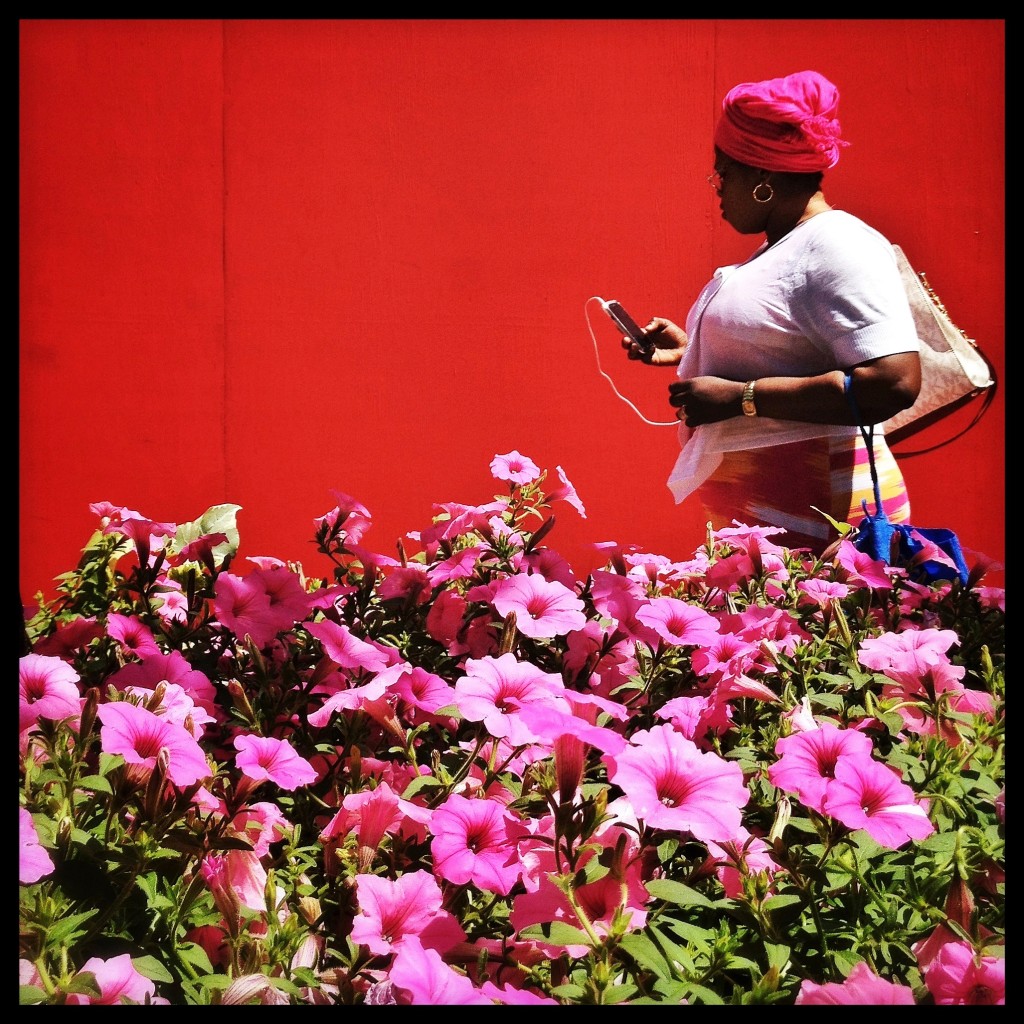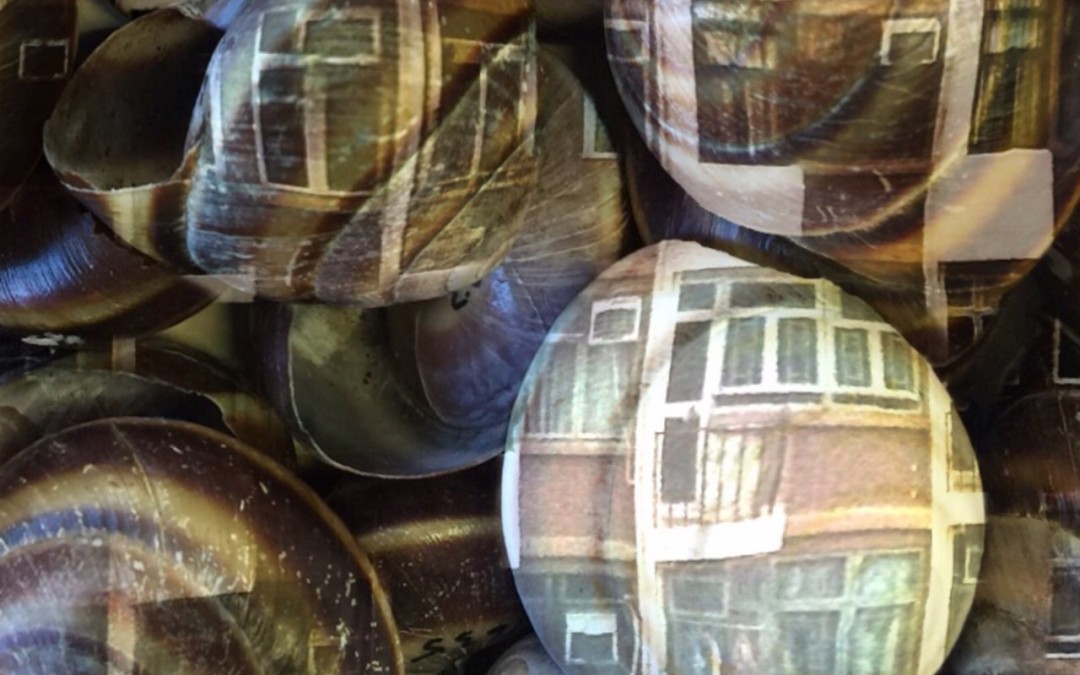
by Grryo Community | Aug 27, 2015 | You Are Grryo
Paula Broom’s exhibit is showing at GKJE Gallery 1 in Sydney, Australia during the month of September.
Here, in her own words, she tells us a bit about herself and how the exhibit came about:
I am a visual artist and iPhoneographer, currently working on an exhibition and social media project that explores issues of biodiversity loss, extinction and conservation. In March and April this year, scientists at the Australian Museum kindly opened their doors and allowed me access to photograph threatened and endangered native species, mostly lesser known invertebrates from their collections, and ask them endless questions about their research.
The first species I photographed at the Museum was Thersites mitchellae or Mitchell’s rainforest snail from north eastern NSW. It has lost much of its coastal habitat to land clearing for development, with the small remnant areas of habitat still at risk of further urban expansion. In my image “High Rise Reverberation” (below), a composite image and one of my more figurative ones, I juxtaposed the snail shells with an image of a high rise development, one of the very drivers of its demise, in order to play on ideas of displacement and habitat.

The beauty of this next species rather eluded me, even using the macro lens of my olloclip: this was the endangered Pericryptodrilus nanus, or the Lord Howe earthworm. At threat of extinction, it is only found in the Mount Gower area of Lord Howe Island. It took a lot of playful editing before I succeeded in showing this species in a much more abstracted way, which I feel it needed for interest.
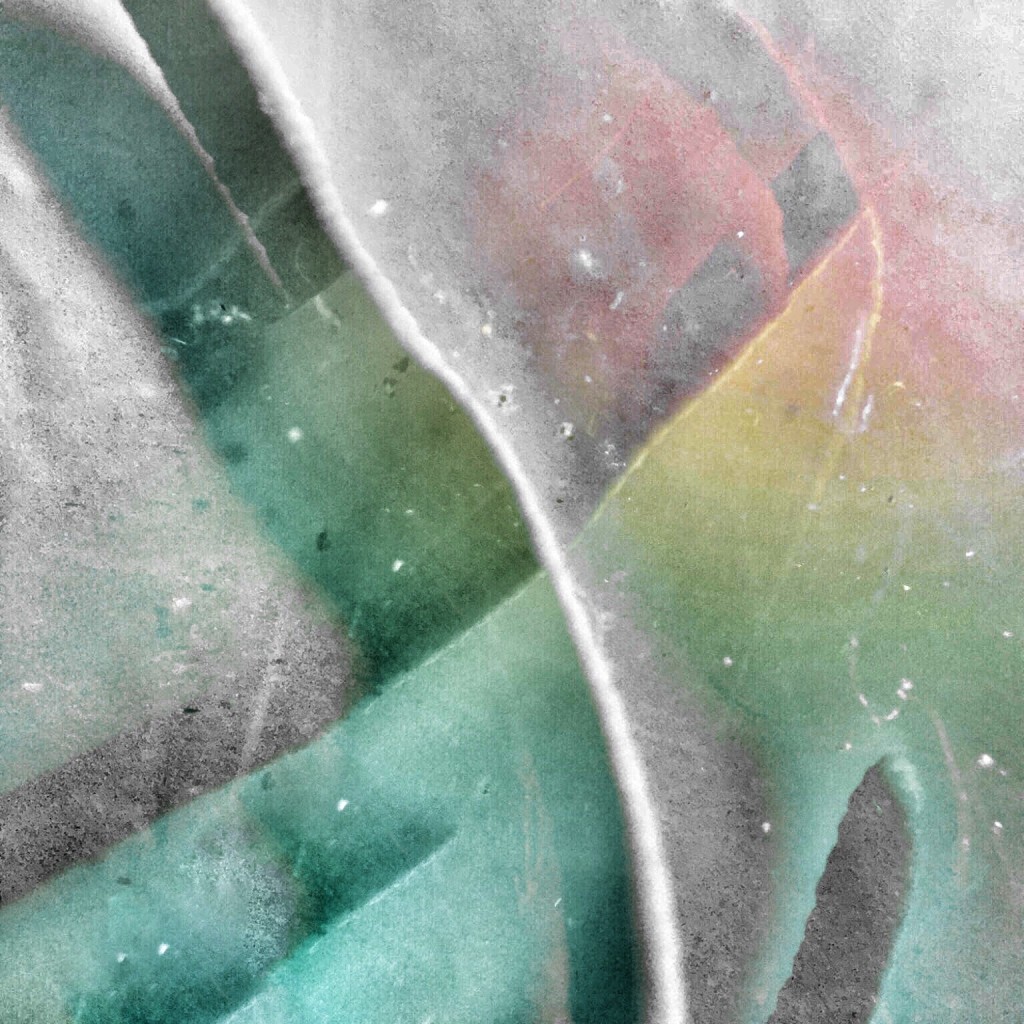
The beach hoppers (Microrchestia bousfieldi) from the South West Rocks area of NSW were a lot more interesting and detailed to look at. They feed on detritus in the intertidal zone and are removed from the ecosystem with seaweed harvesting and clearing, as undertaken on many Australian beaches. This threatens not only their survival but that of the seabirds and other species that rely on them. The image of these beach hoppers, “Shallow Grave”, has been edited to resemble an old fashioned “plate” from an encyclopaedia.
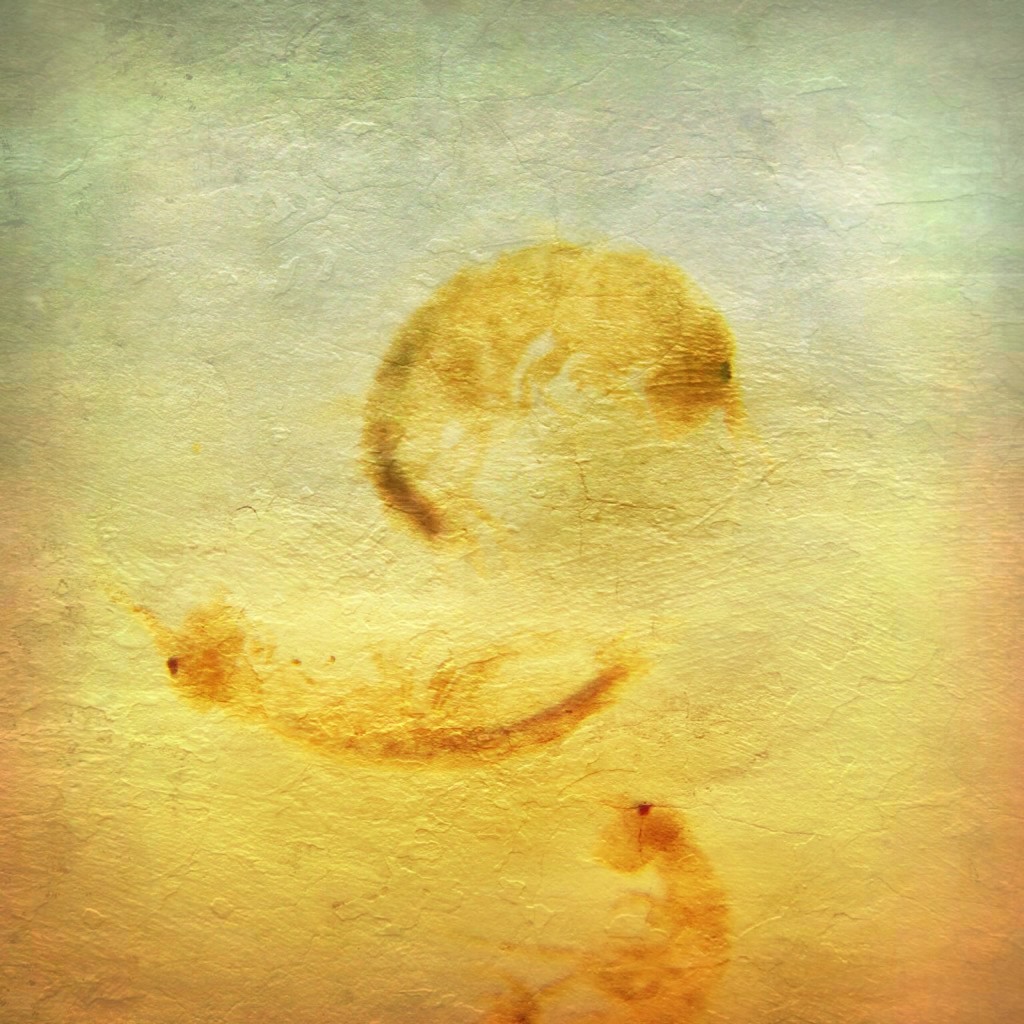
The image, “Fade Away” has one of my photos of a Corroboree Frog disappearing into a superimposed background map of its home range. The critically endangered Southern Corroboree Frog, the Pseudophryne corroboree from the Kosciuszko National Park, is dangerously close to becoming extinct in the wild, predominantly due to a disease called chytridiomycosis that is responsible for amphibian extinctions worldwide. When live, Corroboree Frogs are quite striking and instantly recognisable, having an almost stripped black and yellow pattern over their bodies: preserved in alcohol, they lose their colouring. Looking at their little, lifeless bodies, tags and all, almost stockpiled in the storage jars, I had the uncomfortable thought that perhaps there were more Corroboree Frogs, albeit dead, in those jars than in the wild nowadays. Surprisingly I found it more challenging producing imagery for these little critters than I did for the invertebrate species.
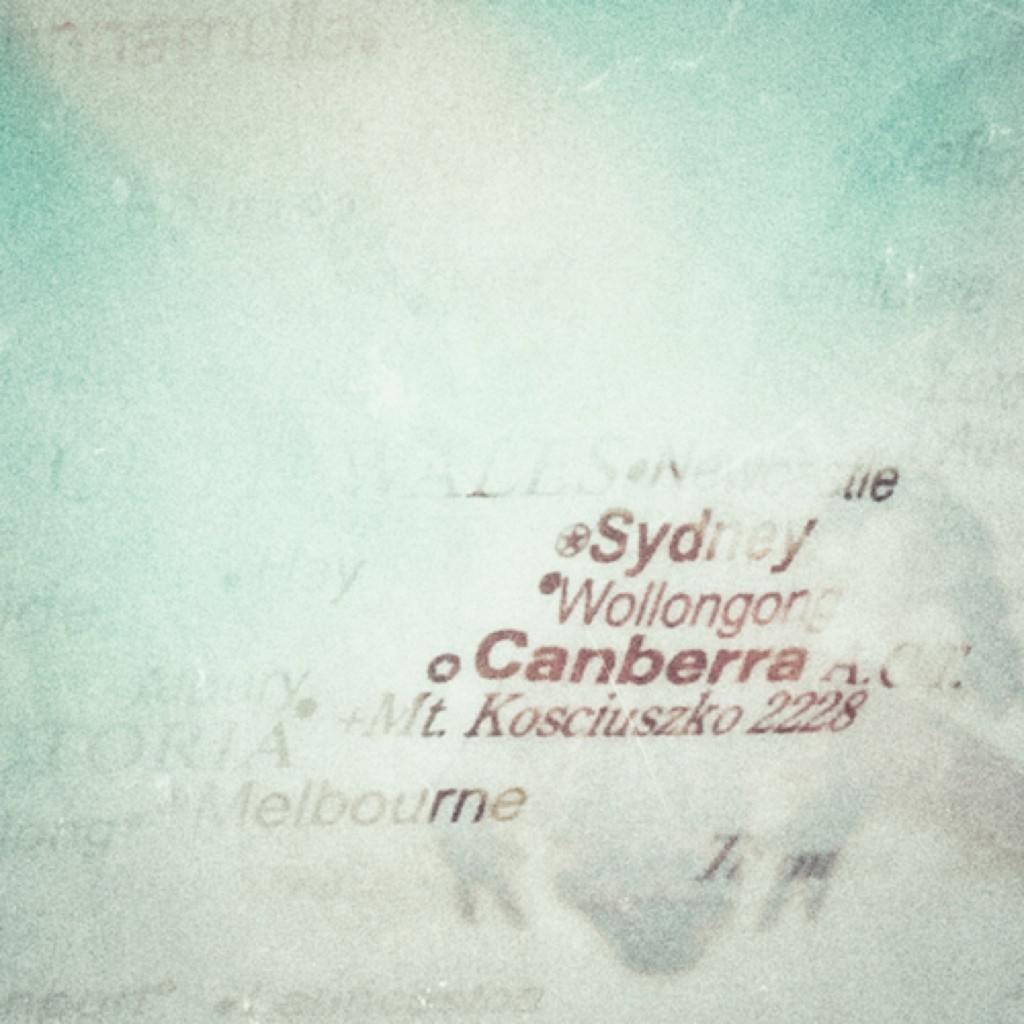
Sadly the survival of many species nowadays relies on the interventions of scientists. Invertebrates aren’t to everyone’s liking for sure, and indeed they are often much neglected components of our ecosystems that we fail to recognise. If a much cherished and striking creature like the Corroboree Frog is not immune from threat of extinction, you have to ask yourself what chance to our less attractive species have? I realised though from talking to the passionate scientists who devote their entire lives to researching these species that having a thorough understanding of ecology and ecosystems makes you aware that everything is important in the overall equation and that, in the end, looks aren’t everything. It got me thinking that if ecology was taught, much like English and mathematics, from primary school upwards, then perhaps we wouldn’t currently be causing the World’s sixth mass extinction ever.
{Grryo is hosting a challenge on Instagram related to this exhibition for the month of September. Visit the feed if you’d like to participate.}
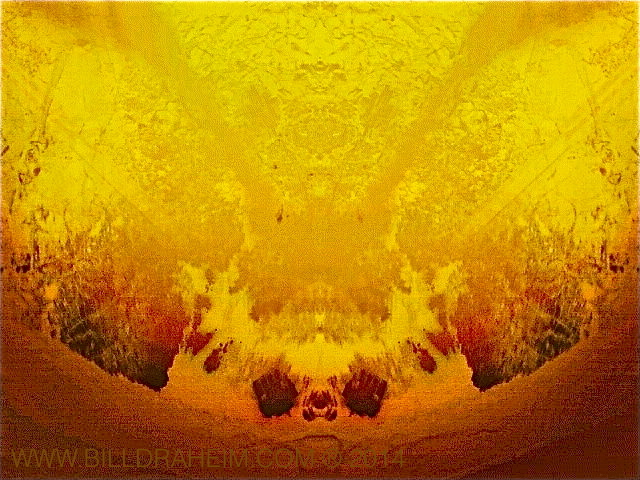
by Grryo Community | Feb 3, 2015 | Stories
Bill Draheim became familiar with Rachel Gardner after reading her comment on William Gosline’s Spectictulive Fiction piece, The Ship, which included his photography as an integral part of the story.
Rachel then challenged Bill to come up with six photos that best exemplified her story, The Machine’s God. Bill used the surreal photos he composed on his Samsung Convoy flip phone to create a haunting abutment of words to images.
The Machine’s God
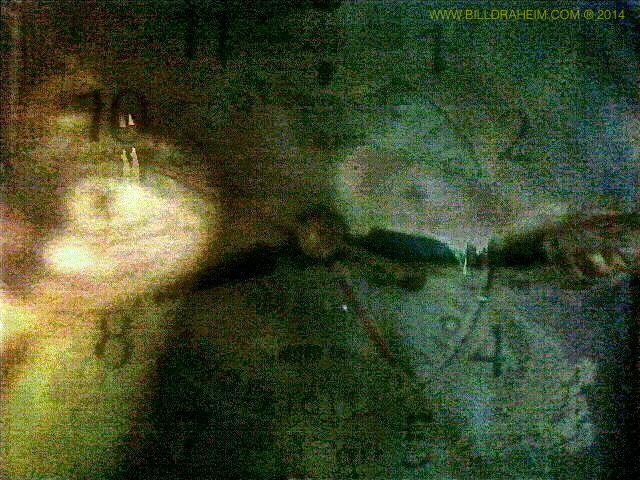
How it started:
I went to bed with a fever once and didn’t wake up for nine days. They told me I was incomprehensible, delirious, what came out of my mouth was like a traffic jam of words and animal noises. I woke on the tenth day feeling hungry. I made myself a fried egg sandwich and then I went to my workbench and built the first one.

The first:
It came to me in my fever dream. I dreamt of fire, of warm, liquid metal. There was no struggle, I simply held the material in my hands and it seemed to shape itself. I didn’t truly know what I had made until I turned it on. My sister came in the door when I had it in my hand. She lost half the hair on her head. She’s forgiven me since then, but I don’t know if I ever will.
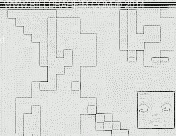
The next:
I locked my first creation away under my floorboards. For all I know, it’s still there, under the rotting remains of our old house. The next I tried to manufacture with caution, but the work leapt ahead of my hands before my brain could object. This one scuttled away under the armoire. We didn’t find it for weeks, only its leavings. All the jam in the house missing, teacups broken, and the cat found stark raving mad in the closet. The search ended when I was putting on my greatcoat to go out one day and heard a crunch under my left shoe. I felt bad, despite myself.

The apex:
This was the one I came to regret the most. It seemed so innocuous when I finished it, made of old pig iron scraps and watch springs. I remember how it fit to the curve of my palm. But then it disappeared for a month. By this time we were used to the machines disappearing for a time after their birth, usually they turned up none the worse for wear. I began to worry when I heard the new mayoral candidate use words I myself had coined, a trip to town hall confirmed my fears. It had grown…and with growth had come a thirst for power. Before I could consign it to the dust, half the town was uninhabitable. Forgive me.
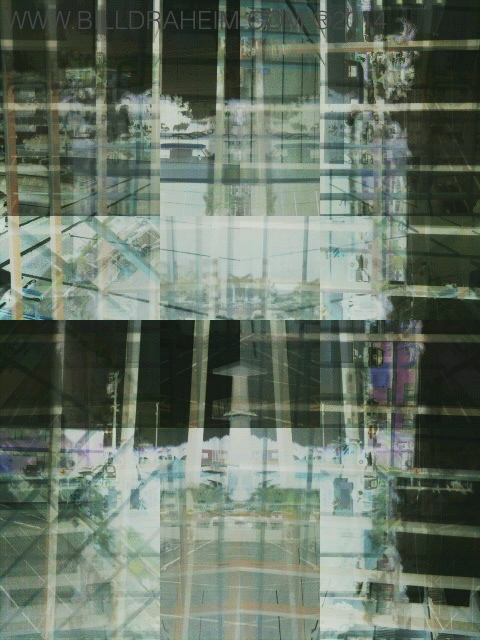
The demiurge:
By now they became as pets, or children. Small in my affections. I had created what seemed the entire gamut of terrestrial life, the insect, the dray horse, the worker bee. It was inevitable that I create something of a deity for them. It wasn’t a bother at first. It merely floated around the rafters, sermonizing the others in a series of squeaks and clicks. The others were quiet when it did that, so I let them be. Later that week I discovered a small shrine on the highest gable of my new house. The others were sacrificing themselves, hurling their tiny bodies to the ground below. Well, there was nothing else for it. I got my wrenches and went to disassemble it. The task nearly got the better of me, but in the end I trapped the thing in the furnace. The flame was violet for weeks after that.
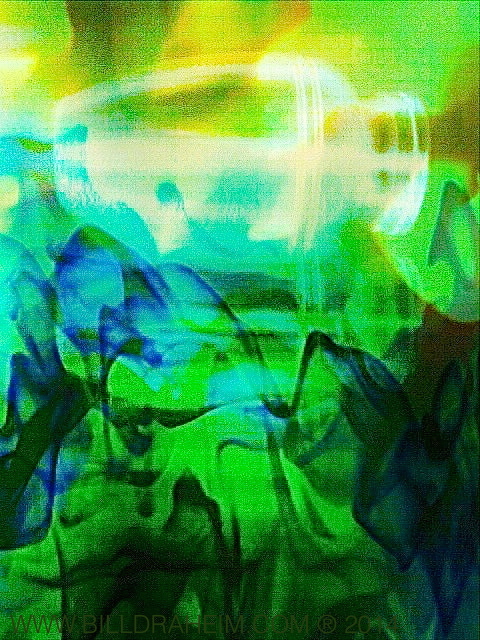
The reaper:
I am old now, my hands have lost their surety, and I get lost in conversations I held decades ago. Like any proper machine, I am winding down for the day. A few of them, my machines, my children, pile at my feet, watching. Even if I knew how to talk to them, I would have nothing to say. They are all of them self-sufficient, and seem to take care of themselves. Yet they seem to look to me for…something. No matter. I am busy with my very last creation. It is not black, nor does it contain skeletal parts, but the function should be obvious to all who lay eyes on it. I start it up and hold my arms out for final judgment. One slice and I am machine undone.
____
Bill Draheim has spent the past 9 years working on various Honolulu-based TV shows and films like LOST, Hawaii Five-0 and Godzilla. Inspired by the sets, props, people and locations that surrounded him, a portfolio of abstract and surreal photographs emerged, all captured on an old flip phone. Some of these photos were used for this collaboration.
Website // Youtube // Facebook
Rachel Gardner lives in the part of California that isn’t LA or San Francisco. She has been published several times in the American River Review and is currently pursuing an art degree.
Website 1 // Website 2

by Grryo Community | Nov 25, 2014 | Stories, Storyteller, StreetPhotography
I was introduced to Jordan Foy by a mutual friend. I was told Jordan had something to do with a mobile photography and I needed to speak to him. We hooked up and from there I discovered more about his involvement with the app Steller, a new storytelling app that has become a firm favourite in my camera bag.
Jordan is based in the historic city of Chester, UK. Even though he is still at university Jordan has worked in the creative industry for others or by himself since the age of 15. In 2011 he was nominated for the Young UK Entrepreneur Awards due to the work he did with the hotels in his local seaside resort of Blackpool. Jordan saw a market on his doorstep where he could sell photography on a large scale. Following on from this he has held an exhibition in a small gallery in Chester and become involved with the team at Steller. This has been an awesome opportunity that has enabled him to meet so many talented creators in the community.

AB: How were you first introduced to iPhone photography?
JF: I first got my hands on iPhone photography when I got my first iPhone. I was obsessed with it, it blew my mind. I even had two cases! I went through the Instagram filters and frame phase and luckily looked back and learned from my mistakes. I love iPhone photography more than I ever thought, and I haven’t picked up an actual SLR since, I feel it doesn’t matter what you take the snap on.
AB: Photographically, what subjects fascinate you and how would you describe your style?
JF: I don’t have a style. This is something I used to constantly worry about. I was worried that I would get left behind and be a failed creative if I didn’t have a style, so I would try and fix this with a style/genre. I soon learnt this is really not the way to do it. I am consistently inconsistent with what I produce, I just like to document everything. I am fascinated with and inspired by others’ creativity. That is what drives me to be better to experiment with new approaches all the time.

AB: We were introduced by a mutual friend who told me about your involvement with the app, Steller. Tell us about Steller and how the idea behind the app came about?
JF: Steller is a new creative social media app where people can share their stories, experiences and interests, which elsewhere can be hard to share. Steller allows you to create your stories right on the phone through images, videos and text. It has a beautiful design aspect to it for creators and its simple to use. There’s a really vibrant and diverse community taking shape of photographers, food lovers, adventurers and creatives that are very inspiring and sharing in a whole new way.
AB: During its launch week, Steller was featured as Apple’s ‘Editors App of the Week’ which is quite an achievement. What makes Steller so special and how is it different from other photo apps or social networks?
JF: I think the thing that makes Steller so unique is people have a fresh way of sharing. This is something that today everybody is doing, everyone is sharing that latest snap in their camera roll, everyone is keeping people updated with what is happening in their lives and what makes them tick. Steller allows you to do all this in a bitesize interactive story where you can share everything from your latest holiday, to your latest creative photography project, to you’re freshly baked goods straight out the oven! Steller allows you to tell a story, which we all have the ability to do, in a way that’s very beautiful looking and personally designed. With Steller, you have a platform to tell stories grand and small to your hearts content and share them wherever you like.

AB: What are the key ingredients that make up a good photographic story?
JF: Great original photography. I am always very intrigued with how people see the world. I actually have an ongoing hashtag series called #seewhatisee on Steller. This allows people to see into other peoples lives and the way in which they document their last 7 days. This is always very interesting. The app is filled with incredible creatives who use photography and videography in all different ways.

AB: Who are your favourite Steller storytellers and why?
JF: I love all different types of stories and new users keep catching my eye with stories that really keep me interested and anticipating their next ones. Recently I have really enjoyed stories from:
@Devin Castro : Devin’s Memory Bank Series in ongoing series which contain fleeting moments in his life.
@Dariustwin : Darren’s dinosaur lightpainting is magic.
@srt4shawn : Shawn’s Convex Views is a real head spin, very creative.
@asenseofhuber : Turtle Tuesday is an awesome project!
@ChadCopeland : iPhone Only Alaska has mind blowing captured scenes.
@tifforelie : Tiffany’s recipe for autumn chili has her signature mastery beautiful natural light in mobile photography.
AB: Where do you get your inspiration for the stories you tell?
JF: I take a lot of inspiration from Devin Castro as I am fascinated with how he tells a story, and how he documents scenes. I also love taking inspiration from different genres. It expands my eyes to the way others produce photography in say food or interiors or architecture, and adopt it to my own practice.
AB: Where can people find out more about Steller?
JF: People can get their hands on Steller for free on the App Store. You can also check out our featured stories on our Instagram page which is updated everyday with the top stories from all different types of creatives. You can also check out the Steller website for our Editors top picks and Most Viewed stories, as well as search for any subject or user on the app.

Connect with Jordan Foy
Steller // Instagram

by Grryo Community | Oct 1, 2014 | Mobile Photography, Stories
Capturing the Colonias of Acuña, Coahuila (Mexico): An Interview with Jessy Menchaca by Matthew Wylie
Jessy Menchaca (Del Rio, TX) began mobile photography in 2010 and has since had her work featured via The Mobile Photo Awards, various EyeEm events, Hipstography, Visure Italia, and both Street Expose books. She is a proud new mother of her daughter Chloe Londyn, who, each and every day, woke up like this.
I spoke to Jessy about her recent visit to Acuña, Coahuila and her desire to capture the family life, value system, and work ethic of those residing in the colonias of Acuña, Coahuila – Mexico.
Matthew: I can’t help but notice an eye in your photographs, at least many of them, that seems to focus on issues of class and ethnicity, particularly that of the Mexican / Latin American working class identity. Can you speak to us at all about this and what you are attempting to do, or say, when capturing these moments, let alone sharing them with us?
Jessy: When shooting in Mexico, I normally visit the not so privileged neighborhoods (known as “colonias”). The people in these neighborhoods, on average, work 60 hours a week for a compensation of about $70 U.S. dollars. Their ability to stay positive and happy, considering their circumstances, is a quality that evokes interest in me. These people manage their household and families on less than $100 a week, while foreign corporations pocket the profit that results from “cheap labor.”
The citizens of Acuna, Coahuila have taught me that when there’s a will, there’s a way. While photographing, I always hope I can capture their persevering spirit. This is something I admire in the Mexican people.



Matthew: This makes me think of the privilege you (us) have doing what we do. I mean, from the privilege of having a piece of equipment like an iPhone, to the privilege of being able to walk around with it in broad daylight without concern, do you see your privilege as a form of responsibility to use it for reasons like this, such as sharing the stories of those who can’t? I think you’re not just seeking to capture their “persevering spirit.” You seem to have something else to say in the sharing of these photographs with the rest of us, no?
Jessy: I’m trying to share some of the circumstances that Mexican people struggle with. Observing them from my moving vehicle, while getting captures with my iPhone, helps me to understand why, to some of them, crossing the border and migrating into the U.S. in an illegal manner would seem like an “opportunity.” When I share the photos, I hope that those who are intolerant and quick to suggest “Mexicans should go back to Mexico” realize and understand where these people come from and why they might desire to leave. There’s nothing attractive about living in a third world country and making $70 a week. In my opinion, if the U.S. and other foreign corporations that operate in Mexico compensated labor in a fair manner, maybe the quality of life in Mexico would increase and less Mexicans would consider taking the risks involved with migrating into the USA. Make no mistake, I’m not saying “Open the borders and let them all in!”, no, not at all. I just would like to spread consciousness and hope for a bit of understanding towards their situation, and, living in Texas, ours.


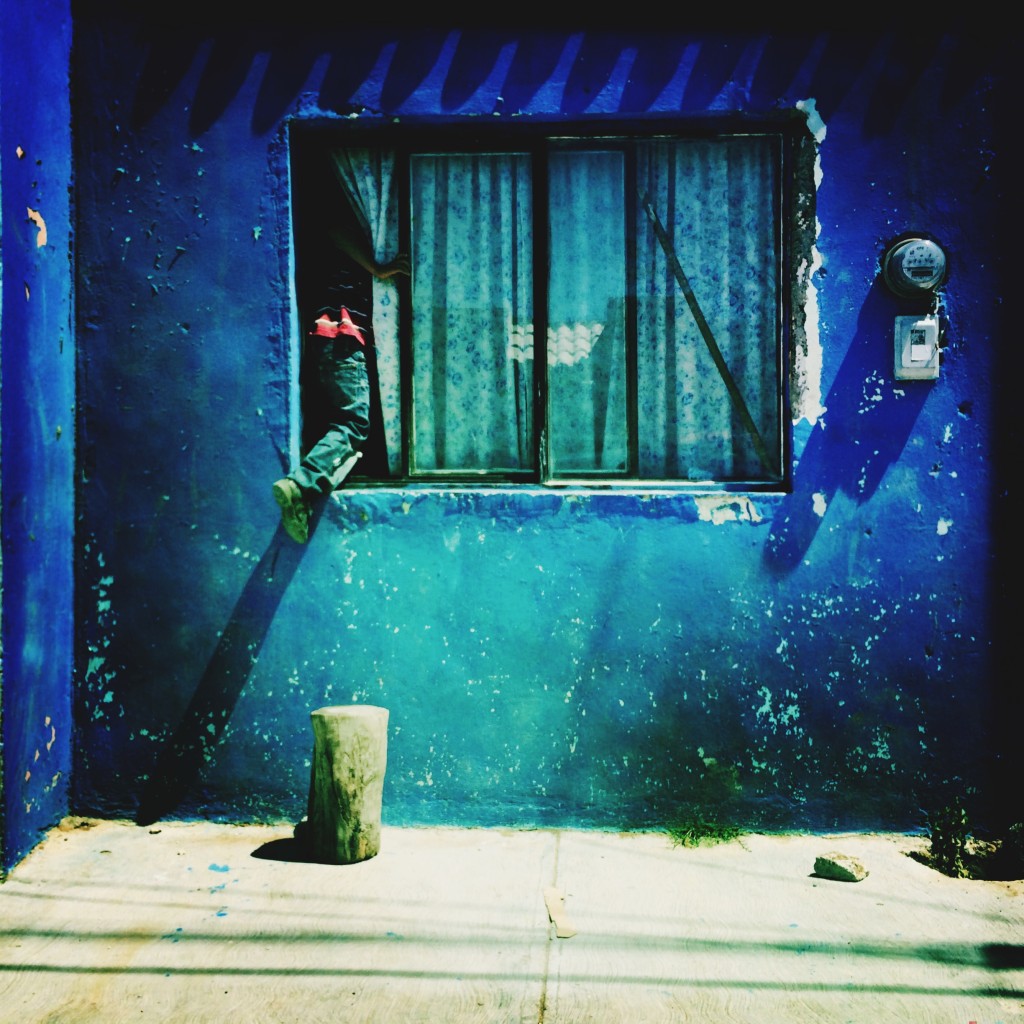
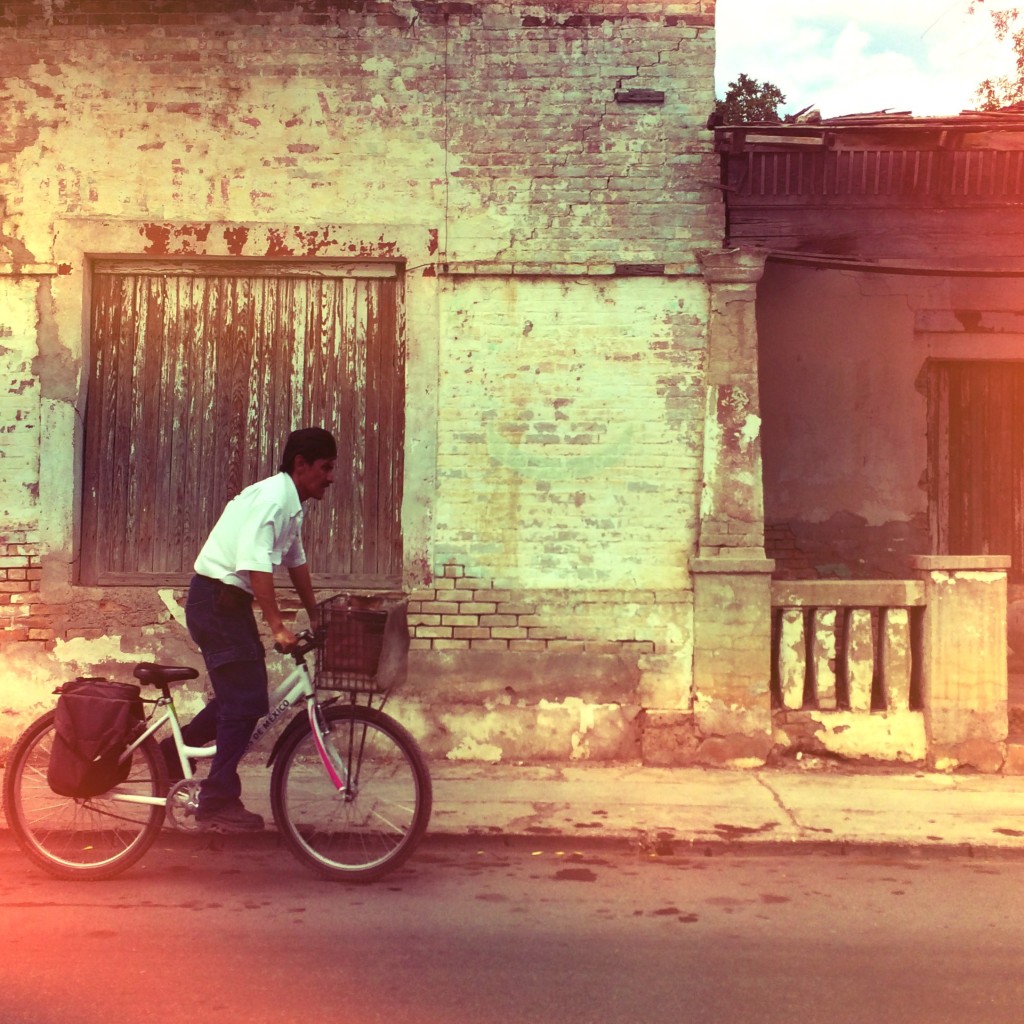
Matthew: In terms of the idea of photography being more than capturing “pretty images,” which is, in my opinion, far too often the case for mobile photographers, both amateur and professionals alike, I wonder if there is any one photograph (or even photographer) that for you, personally, has helped you “understand” a situation that you previously simply did not?
Jessy: The work of Louie Palu while covering the drug related crisis along the US-Mexico border was an eye opener for me. His “Mira Mexico” portfolio reveals who has been affected the most by this conflict. It’s a very explicit visual narrative of this ongoing crisis.
Matthew: Can you tell us a bit about what it is like to compose your narratives / make your captures in the colonias you mention, rather than in your own city? Did any of this make you think differently of what you are doing with your photography?
Jessy: Photographing in Mexico is more attractive to me for many reasons. The people seem more aware of their surroundings due to their general inability to purchase technology. As such, the streets are filled with children playing with old tires, cardboard boxes, deflated soccer balls, or any other item that requires the direct use of their imagination. Women can be seen gossiping with each other, or sweeping the sidewalks and men are usually seen working on something, whether it’s an old car, their house, or anything else that needs fixing. Most of these scenarios simply can’t be found in U.S. cities as frequently, at least not the cities I have spent time in. For example, I’ve searched for similar scenarios in Los Angeles, California to New Orleans, Louisiana, and all over Texas, my home state. What I have found, everywhere, is that people seem to be too busy living their lives of undeniable privilege. Children play on electronic devices, women gossip through social media and men pay other men to fix their broken items.


Matthew: Are you not also seeking to capture something that we, as a society in general, are losing? Might you also be seeking to “capture” this too? You seem to remind me of how photography can help us see what we may have not seen otherwise, and what you are talking about is not just a moment, but an entire set of cultural and social values and habits.
Jessy: One of the things that I fondly admire is that the people of these colonias seem to retain this unique sense of innocence, something that is not easy to find and normally lost through the materialism that pervades the U.S. They seem to find happiness easily, and not simply through obtaining material possessions. I admire how they’re not preoccupied with “Keeping up with the Martinez,’” so to speak.
The U.S. seems so often to be an “all about me” society. With the Mexican concept of family life, this type of egotism just is not as prevalent. This is something I also admire. The difference was highlighted to me some days ago by one of my very own relatives, who happens to be a second generation American citizen. While going through some of my photos, he said “It’s crazy how this woman is so young and has pretty much given up on her life because now she has to care for all of those kids!” I looked to see which photo he was referring to and it was a photo of a young Mexican woman, ready to cross the street with her two children. He was so quick to pass judgment, never stopping to think that maybe this woman, like many Mexican women, believe in forming families, even if that need is determined by their environment. What if that was the life she chose (rather than seeking one in the U.S., legally or illegally)? What if that is what makes her happy and complete? Mexicans are exposed to the same media as we are, they have dubbed versions of our same films, same reality tv, and they at times sing along to the same lyrics people in America do. Even with all of this, they still consider forming a family, and managing with a very light income, living an “accomplished life”. #VivaLaFamilia



Matthew: You are a mother of a newly born child (congratulations again!), and I wonder, what advice might you give to young people today who may see the camera in the mobile device primarily as a means to self-glorify, or socially interact?
Jessy: I’d tell them to live a little more and worry a whole lot less about looking attractive for strangers. Coming across shallow “selfies” on any social network really irks me. It is rather unfortunate that females need to be validated by the amount of “likes” they can obtain by showing off their physical attributes. When I come across an attention seeking post, I always wonder “who raised you?” I was taught that I don’t need for anybody to validate my existence. Only I can do that for myself.



Matthew: Jessy, thank you for your time and for sharing your time in and impressions of the colonias with us.
If you will permit, I would like to conclude the interview with the famous Benard Pivot questionnaire that is actually a take on Marcel Proust’s (one of my favourite authors) set of questions, because that’s just how I roll. You good?
Jessy: Bring it on.
Matthew: What is your favorite word?
Jessy: “Fuck”
Matthew: What is your least favorite word?
Jessy: “Can’t”
Matthew: What turns you on?
Jessy: Self-confidence and the smell of good cologne
Matthew: What turns you off?
Jessy: Lack of self-confidence
Matthew: What sound or noise do you love?
Jessy: Chloe’s (my daughter) baby gibberish
Matthew: What sound or noise do you hate?
Jessy: Racist remarks
Matthew: What is your favourite curse word?
Jessy: “Fuck”
Matthew: What profession other than your own would you like to attempt?
Jessy: Samba Dancer
Matthew: What profession would you not like to do?
Jessy: Anything in the medical field
Matthew: If heaven exists, what would you like to hear God say when you arrive at the pearly gates?
Jessy: “Hi Jessy, what a ride! Nice heels. Your Dad has been patiently waiting for you.”
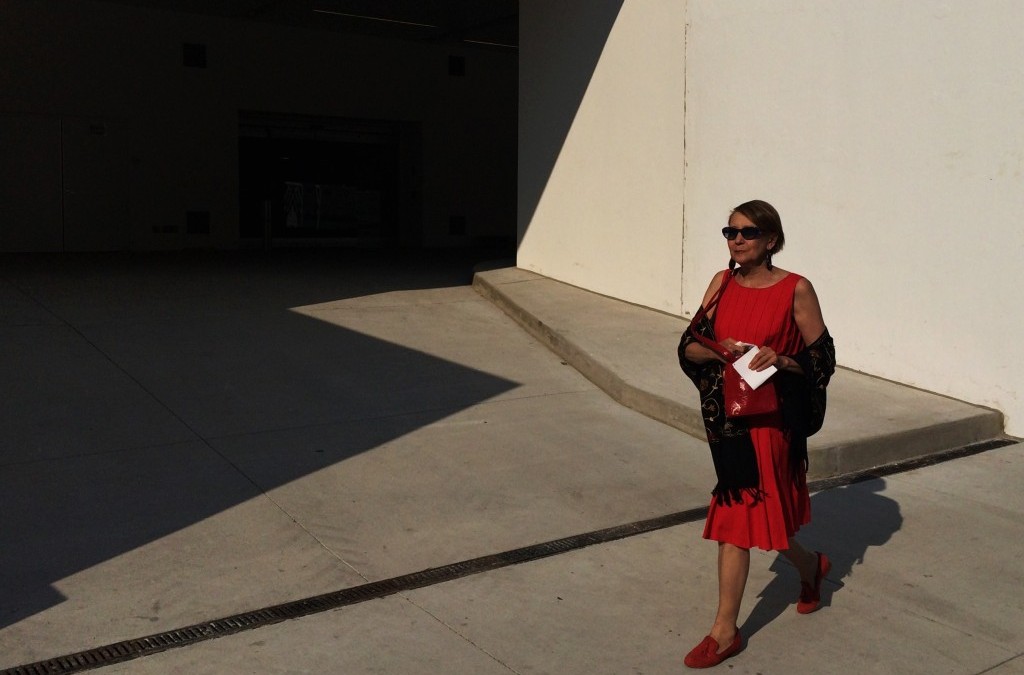
by Grryo Community | Sep 24, 2014 | Stories
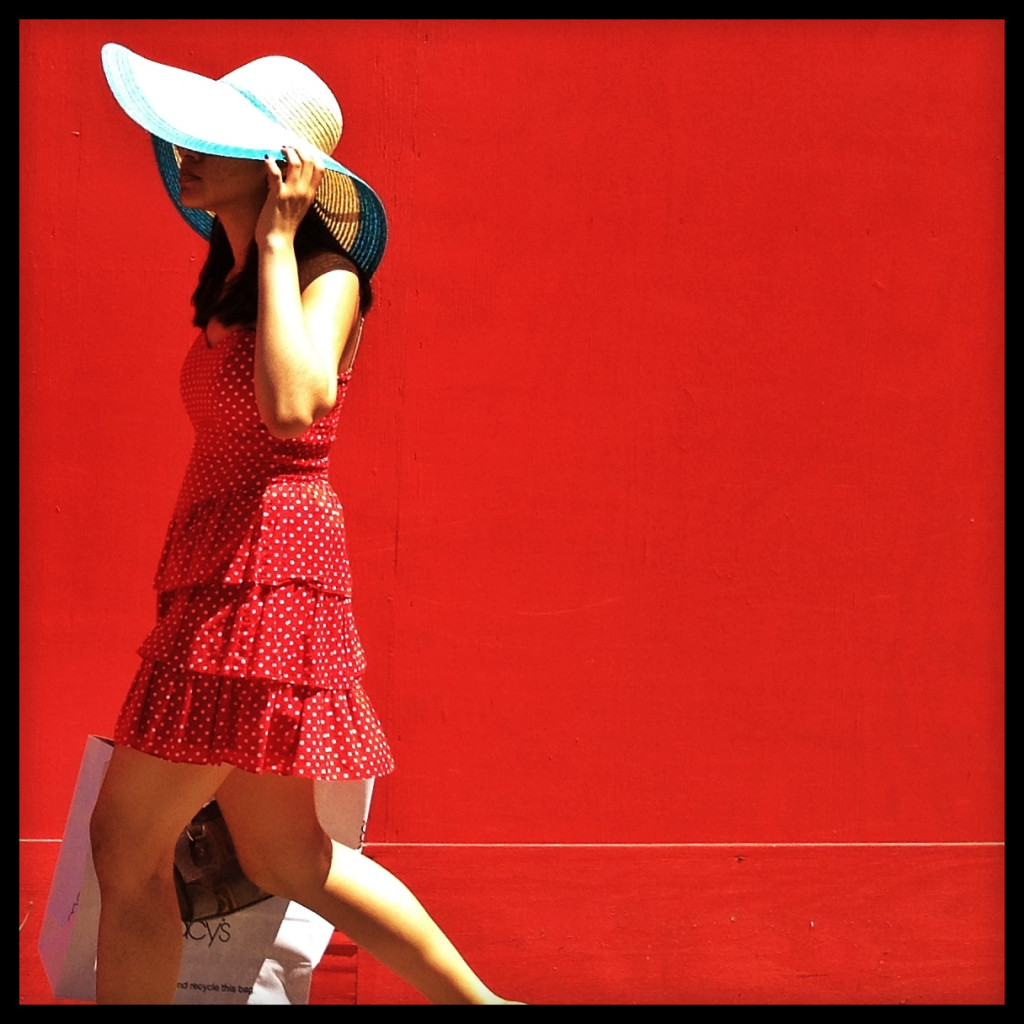
Seeing Red by Matt Coch
It is a well known fact that color can affect us subconsciously. Colors can affect our emotions, perceptions, and behavior. Whether we realize it or not, we all have associations with color. Some of these associations are:
Green: Nature, Environment, Luck, Jealousy
Blue: Peace, Tranquility, Loyalty
Yellow: Joy, Happiness, Cowardice
Black: Power, Mystery, Sophistication, Death, Grief
Of all the colors, I think the color red is the most arresting and eye catching of them all. Red is often associated with danger, heat, romance, bravery and even aggression, to name a few. The following are some interesting facts about the color red.
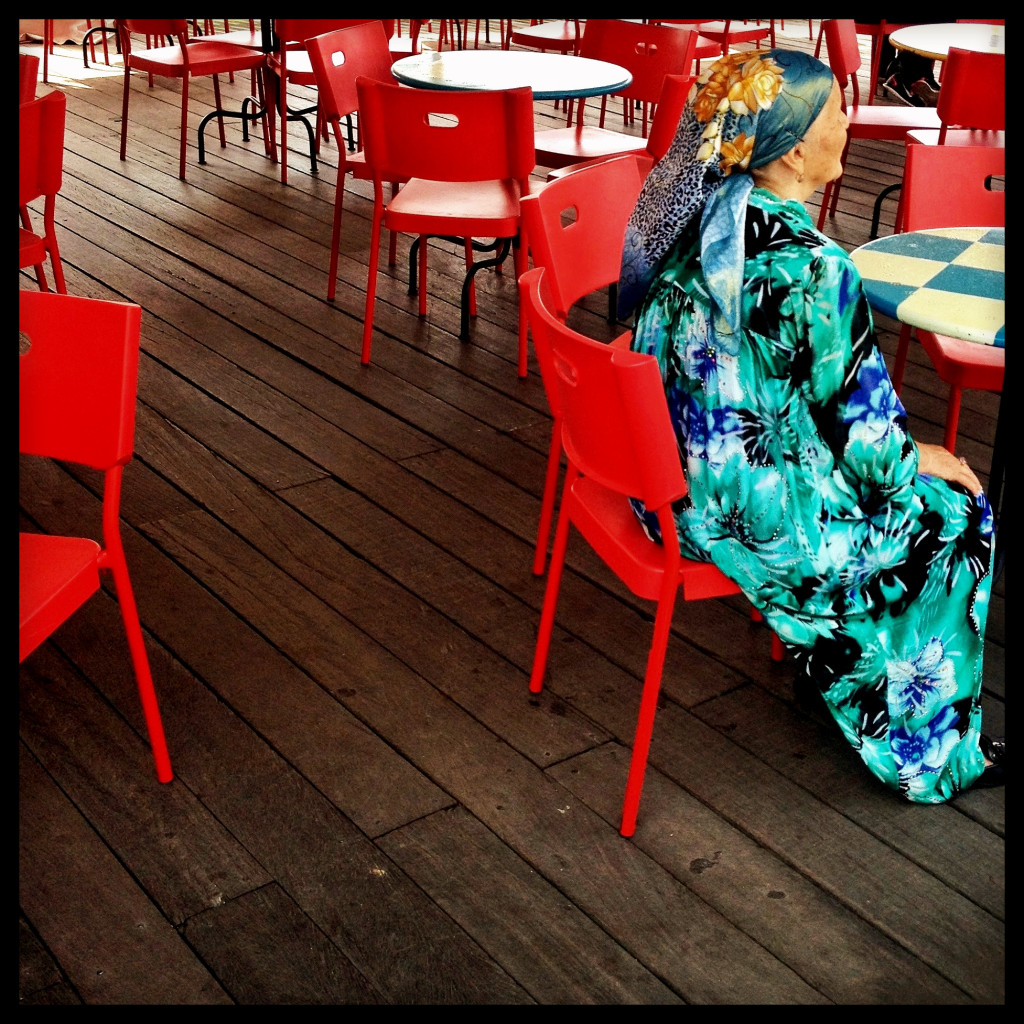
The color red can stimulate the appetite and increase the craving for food. This is why many restaurants are often adorned with the color.

Red is an emotionally intense color. It increases respiration rates and raises blood pressure.
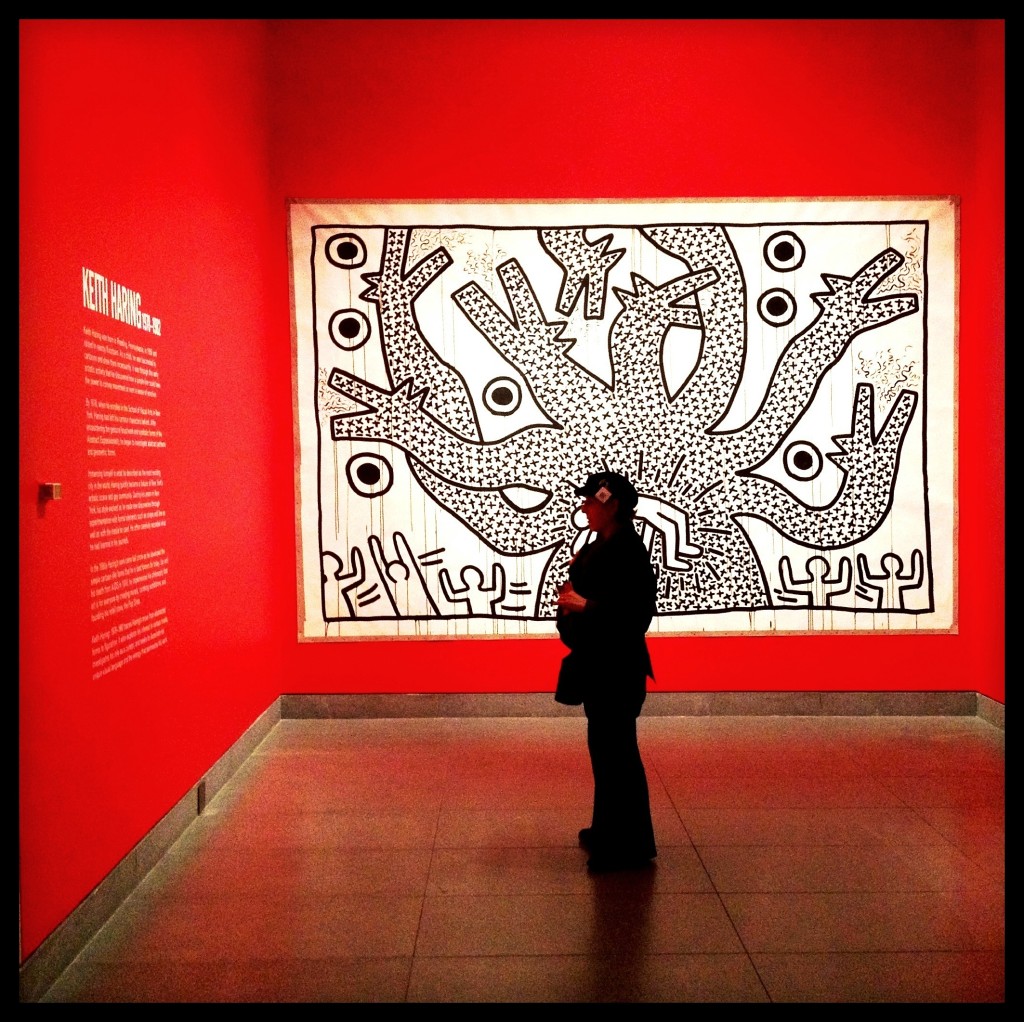
It is attention grabbing, demanding you to take notice. This is the reason it’s used for danger signs, stop signs, fire equipment and street lights. Red is also the most popular color used in flags around the world. 77% of all nation’s flags contain red.
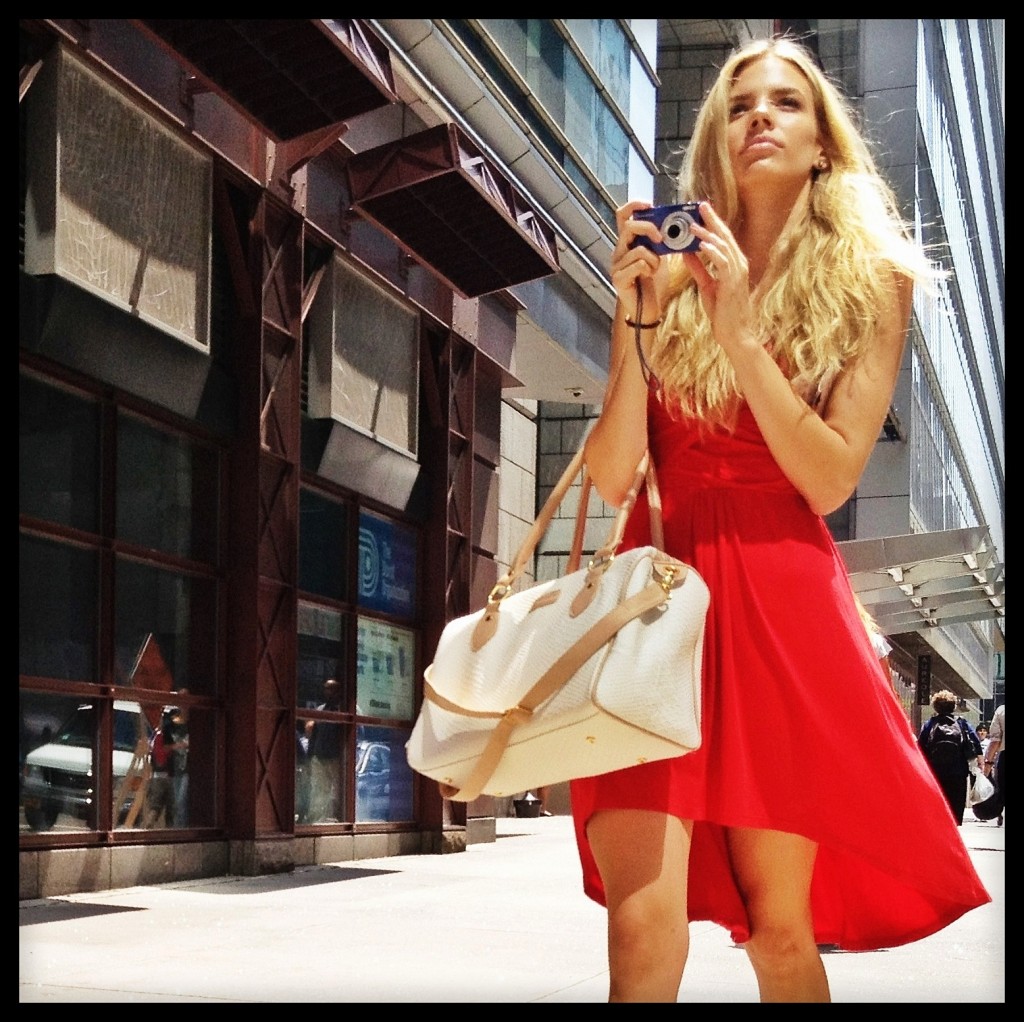
Red is said to stimulate sexual appetite and passion, think of Valentine’s Day.
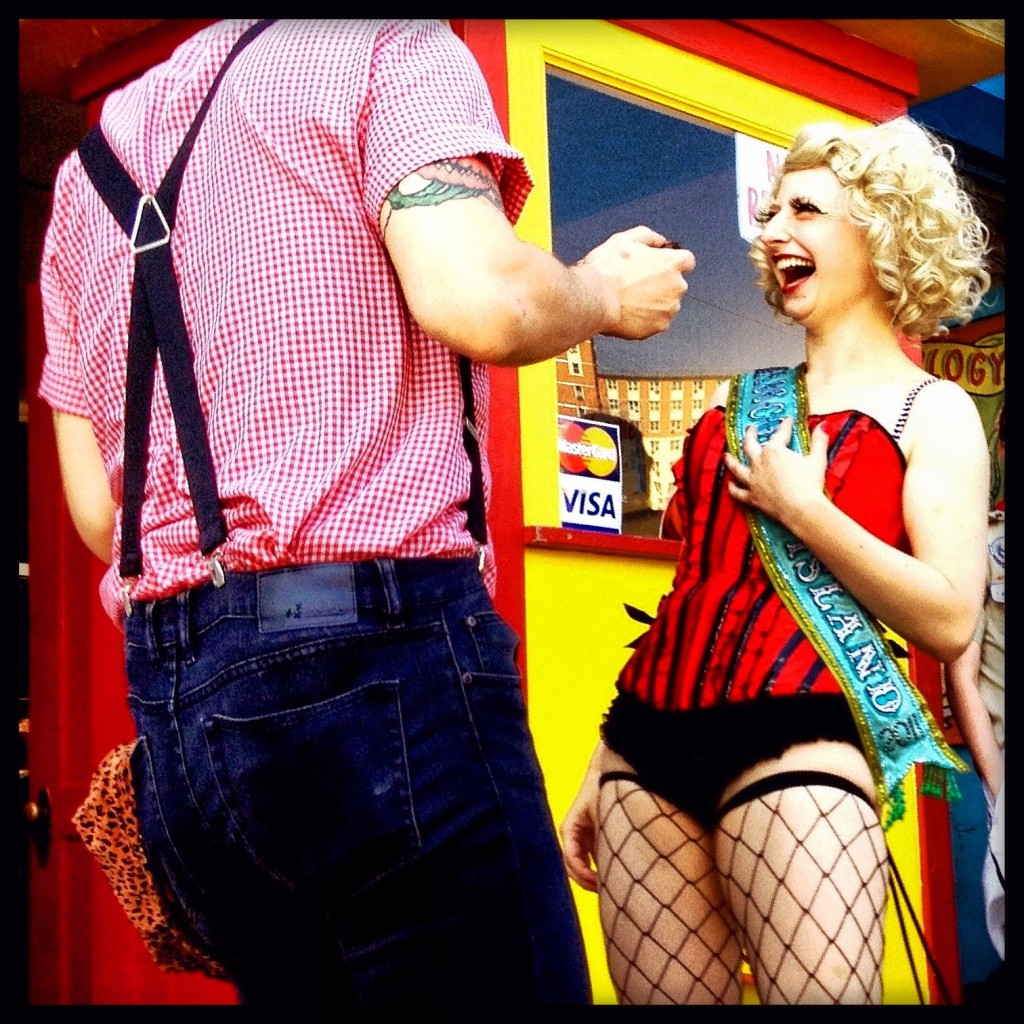
Red is not only used to attract buyer’s attention, but to also influence their buying behavior.
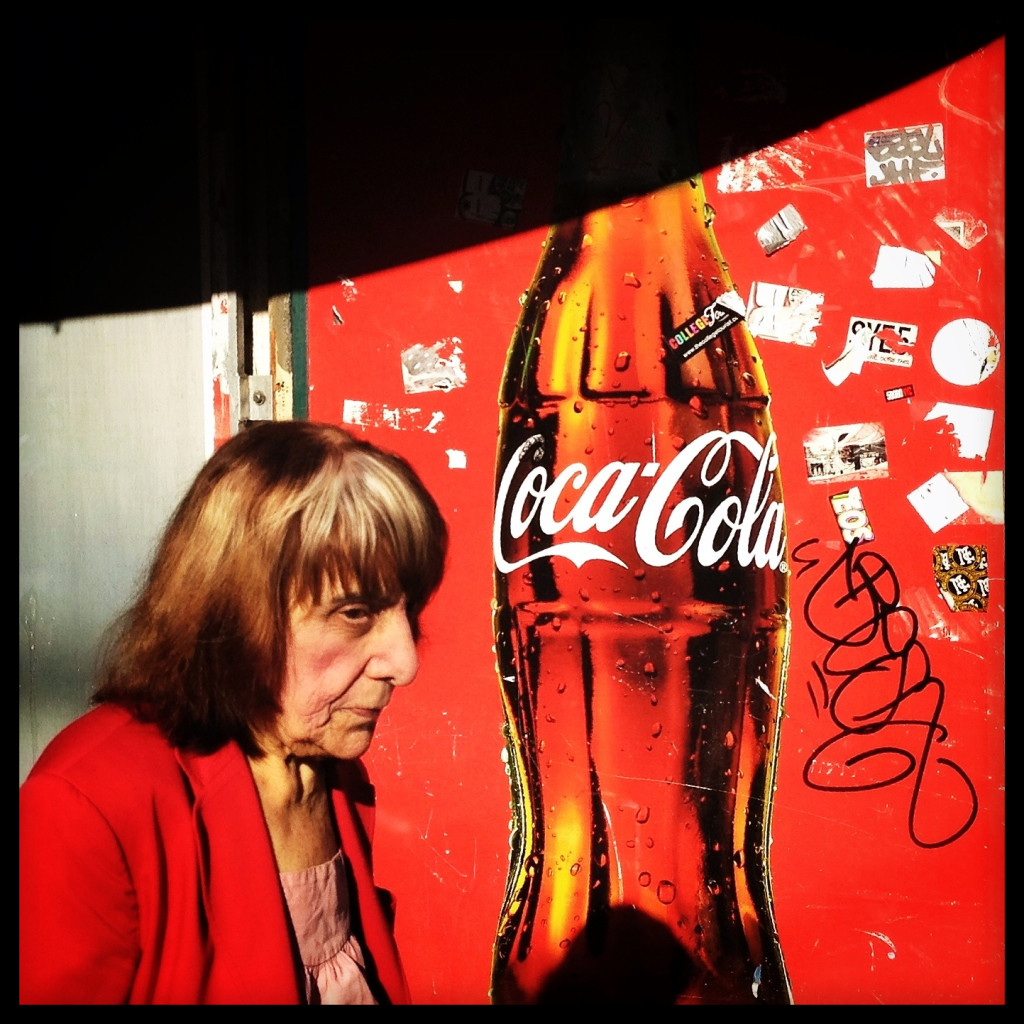
Some believe the expression “seeing red” comes from the flushed color one gets when angry. Others believe it comes from bullfighting, where the matador waves a red cape in order to enrage a bull to charge.
Side note: Bulls don’t really hate the color red. They are colorblind and are simply reacting to the movement of a cape.
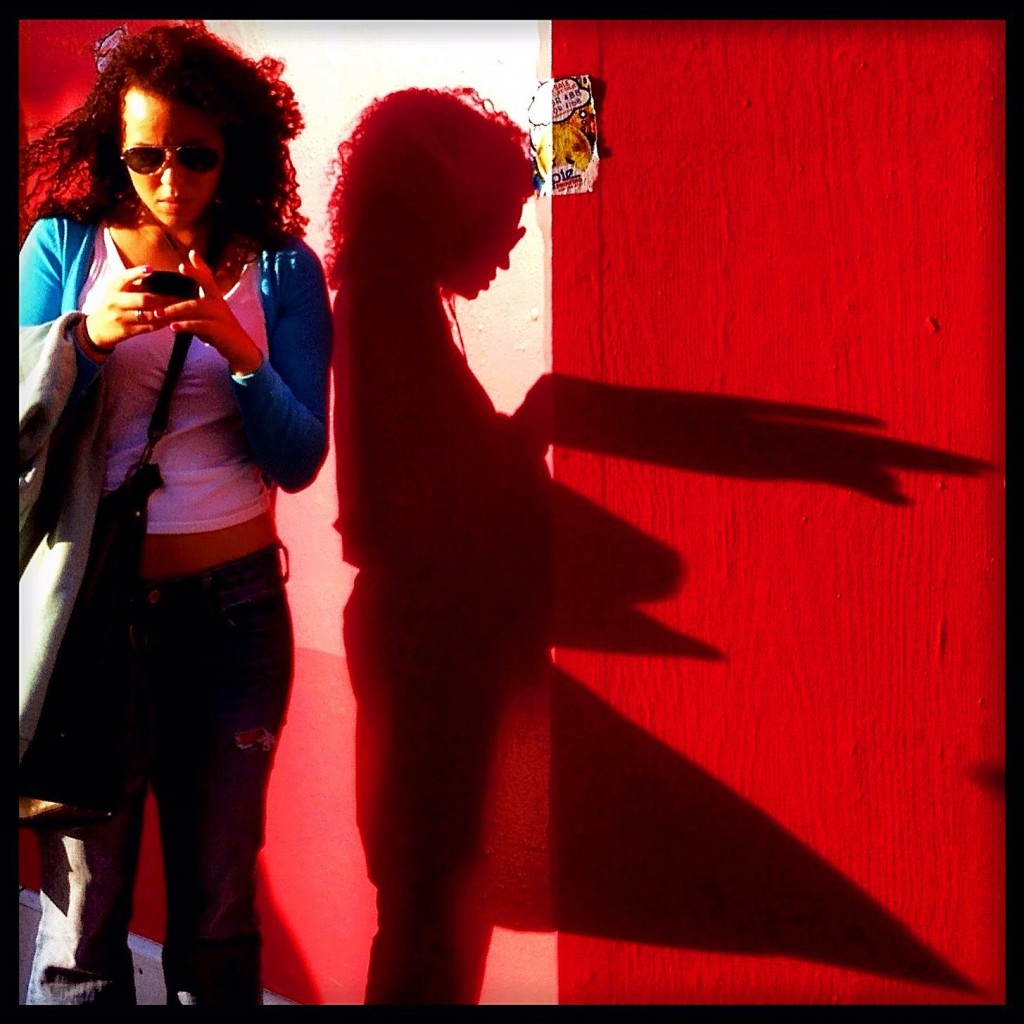
Red is the second most popular favorite color of all people. The most popular favorite color? Blue.
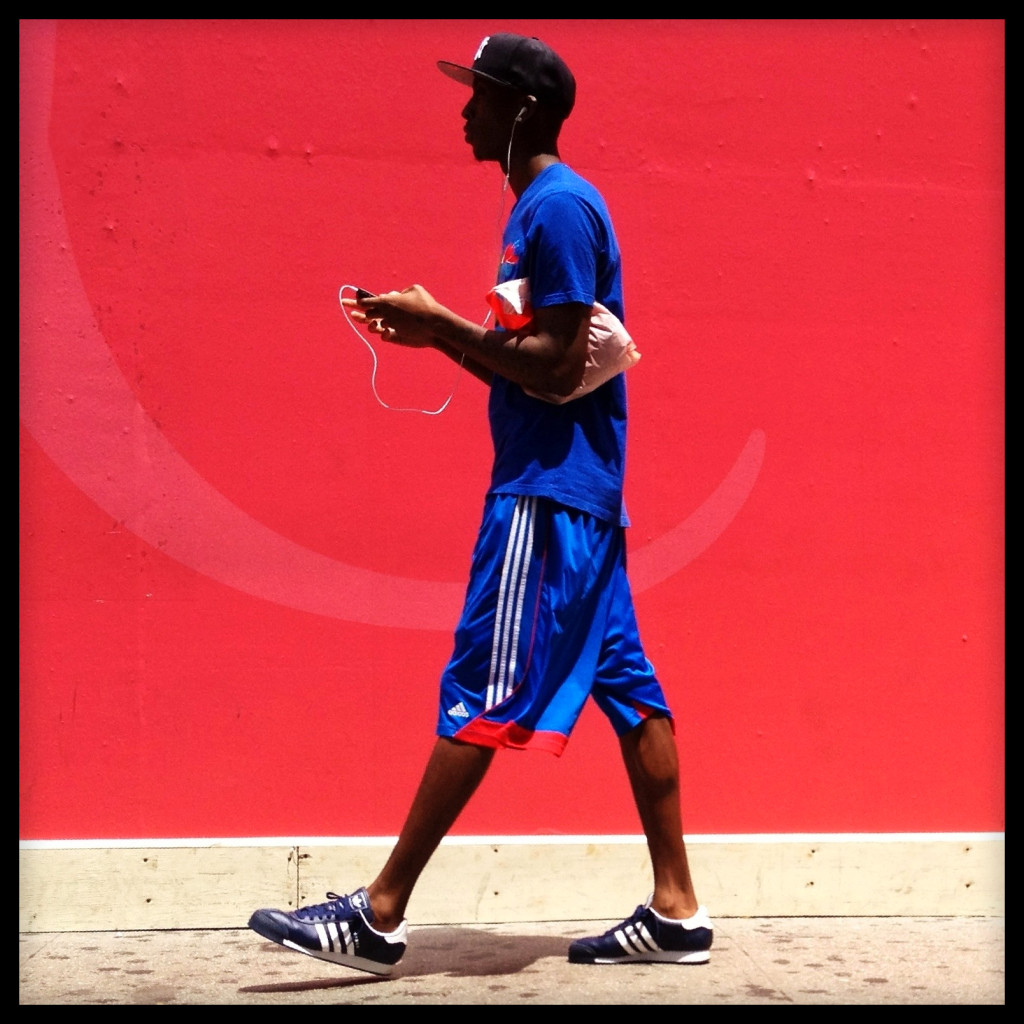
Men and women see the color red differently. Genetically speaking, women can see more of the red spectrum than men can.
